Sali Municipality Offering Generous Incentives for Demographic Revival
January the 30th, 2023 - The Sali Municipality on Dugi otok has decided to pour very generous sums of cash into trying to ensure a demographic revival for the area, with each family who has a child being granted an enviable amount of cash from the local authorities.
As Poslovni Dnevnik writes, a positive example of proper care for families and tackling the ongoing demographic crisis can be found in the Sali Municipality on Dugi otok, which holds the record in Croatia for the benefits it provides for each newborn child. Each family that has a child receives a massive 60,000 kuna - almost eight thousand euros in the new currency, in six equal annual installments.
Negative demographic growth is a problem for most of Croatia, and it especially affects the islands. Dugi otok has a little more than 1,500 inhabitants, of which about 650 live in the Sali Municipality. The fee paid out by the powers that be for each newborn child was introduced back in 2017, and now amounts to slightly less than 8 thousand euros, according to a report from HRT.
The time spent by the youngest little islanders in the new kindergarten in Sali is also co-financed by the municipality, and money is also allocated for Christmas gifts and school workbooks. In short, allocations for children make up a large part of the local budget, which means a lot to their parents.
''Children get a better treatment, they can get access to better services, better food for babies, better strollers can be bought. It's a big deal because everything is more expensive on the islands, so that money means a lot and goes a long way,'' said Sebastijan Raljevic, the father of a one-year-old girl in Sali.
Another fact that is often forgotten is precisely what Sebastijan mentioned - that everything is more expensive for islanders, from basic food and hygiene items to fuel and building materials. In addition, everything that is taken for granted in the city, such as arranging extracurricular activities for the kids, becomes a real undertaking. However, there are quite a few children in the Sali Municipality, and their numbers are steadily on the up.
''When we look purely statistically, since 2017, more than ten children have been born in the Sali Municipality every year. If we look at the number of students attending the local primary school, in the eight classes there are, only three classes have ten or more children. I think the greatest importance of this support is to make life easier for both children and their parents and for them to stay at home here on the island, which is the goal of this measure, said Zoran Morovic, the mayor of the Sali Municipality.
As such, parents of two or more children receive already very large amounts from the local authorities, with the help of which they can start a business, or equip and modernise an existing one, which will make life on the island easier for adults and ensure a carefree childhood for the youngest residents.
For more, make sure to check out our news section.
Sali on Dugi Otok Once Led in Infections, Now it Leads in Vaccination Rate
November the 7th, 2021 - Sali is a beautiful place on a famously stunning island, Dugi otok. It once led in terms of coronavirus infections, which isn't exactly the best statistic, but now things have been turned on their heads and Sali is leading in terms of the vaccination rate.
As Morski writes, according to recent data published by the Croatian Institute of Public Health, one municipality in Zadar County is the absolute record holder in terms of the vaccination of its residents. In Sali on Dugi otok, a municipality with an official census of 1,900 people, 64.3 percent of them have already received both doses of the coronavirus vaccine.
At the beginning of the pandemic, it didn't look like that, quite the opposite in fact. After several group celebrations and one birthday, the infection rate escalated, and the number of those infected in Sali rose to as many as 39 in one single day. Every other house in Sali had its residents put into self-isolation back in those days, writes local portal Zadarski.hr.
In addition, they also had a priest, Tomislav Vlahovic, who preached from the altar that ''coronavirus doesn't exist and that true believers cannot be infected'', which is absolutely mind-boggling to say the least. He refused to listen to the instructions of the Archbishop and to implement the measures of the Civil Protection Directorate, and he encouraged others to follow his path. Some people unfortunately even listened to him. That's why just one year ago, the church choir became the second major focus in this small town.
''Coronavirus really went hard here in Sali, people saw first hand how dangerous and contagious it is. Then, when that first wave subsided, the tourist season came from which most of the islanders live, so then they started to act very responsibly. We were among the first to have a testing point on the island. Of the 500 tourists tested before leaving, none were positive. As for the islanders, ten days ago we had five to six cases a day, now that number is between two and three positive people. So, despite all these black statistics, the number of infected people in Sali is declining,'' said the mayor of Sali, Zoran Morovic, who personally, together with the local island Civil Protection Directorate and medical staff, got involved in the vaccination campaign.
An uncomfortable situation unfortunately unfolded when it seemed that the clinic in Zman could have been left without a doctor as the virus ran wild. Sali asked for help from the Institute of Public Health, which sent its team down and out into the field with the head of the epidemiological service, Dr. Alan Medic.
''They've been here six or seven times for the people on the island, especially at the time of the pandemic, and the availability of vaccines was crucial. We were all committed to their arrivals: we kept people informed, prepared lists so that by the time the team came to the island everything would be ready for vaccination to be carried out. I even transported the medical team in my car a couple of times from place to place, to make everything go smoothly. I have to tell you, it was with joy because the medical teams were great, everything was done really flawlessly. Whoever wanted to get vaccinated got vaccinated. And we all wanted to! It’s important to say that there weren’t any more severe cases among the younger people except for one guy who ended up needing oxygen. He wasn't vaccinated. But, he managed to pull himself out of it, it ended well,'' said Morovic for Zadarski.hr.
Bibinje is the worst...
Overall, the share of vaccinated people in Zadar County in any part of it is not lower than twenty percent. Vaccination of less than thirty percent has been recorded in Bibinje (with only 20.76 percent), followed by Obrovac, Stankovci, Policnik, Galovac, Sveti Filip i Jakov, Pakostane, Skabrnja, Sukosan and Polaca. Zadar is brighter orange on that map with 35.42 percent of the local population vaccinated.
For all you need to know about coronavirus specific to Croatia, make sure to bookmark our dedicated section and select your preferred language if it isn't English.
Dugi Otok Through the Lens of a Croatian Digital Nomad Permit Holder
September 6, 2021 - Digital nomads give back to communities in various ways. The fifth in a new series on TCN, following the lens of Steve Tsentserensky, one of the early recipients of the Croatian digital nomad permit. Where better to continue than gorgeous Dugi Otok?
One of the discussions in Croatia these days surrounds digital nomads. What EXACTLY does Croatia get from digital nomads, especially if they do not have to pay income tax locally with the 12-month permit?
It is a classic Croatian tourism short-term mindset, which has become sadly familiar over the decade I have been writing about the subject.
For me, there are three key wins for Croatia - and they all cost nothing.
1. Permit holders may not pay tax, but they are spending on rent, food, drink, entertainment once they leave their virtual office. Think of them as long-stay tourists if you will. I never heard of anyone here complaining about tourists spending here.
2. The mindset. This, to me, is one of the most exciting aspects of the digital nomad era. People with fresh ideas, different experiences, stimulating lifestyles. If they are moving to Croatia because it is so great, perhaps Croatia has something to offer, rather than the sad path of emigration.
3. The fabulous free promo from digital nomads, clearly in love with this beautiful country. They decided to come, love what they find, and want to tell the world how amazing Croatia is - through blogs, Instagram posts and various other forms of social media. Kind of like the national tourist board's job if you like. Only better.
This series will focus on the last point, the fantastic free promotion of Croatia by these longer term visitors. TCN is thoroughly enjoying our working partnership with one of the early recipients of the digital nomad permit. Steve Tsentserensky from Ohio. Steve first came to my attention with this fabulous video of Zagreb.
We are big fans of Steve's work, and we met recently over a beer or three in Zagreb. Steve will be travelling around the country over the next 12 months (actually, we think a little longer) documenting Croatia through his lens. We thought it would make a nice feature on the site, as well as showing how just one nomad with the permit is spreading the word about this beautiful country, so that others may see and come.
And so continues our new series - Croatia through the lens of a Croatian digital nomad permit holder, this time on Dugi Otok.
They say a picture is worth a thousand words. And so too a great video. So I will shut up now.
You can follow Steve on Instagram, where he picked up over 2,000 new followers recently, after his CNBC News video about the Croatian digital nomad lifestyle went viral. Check it out above..
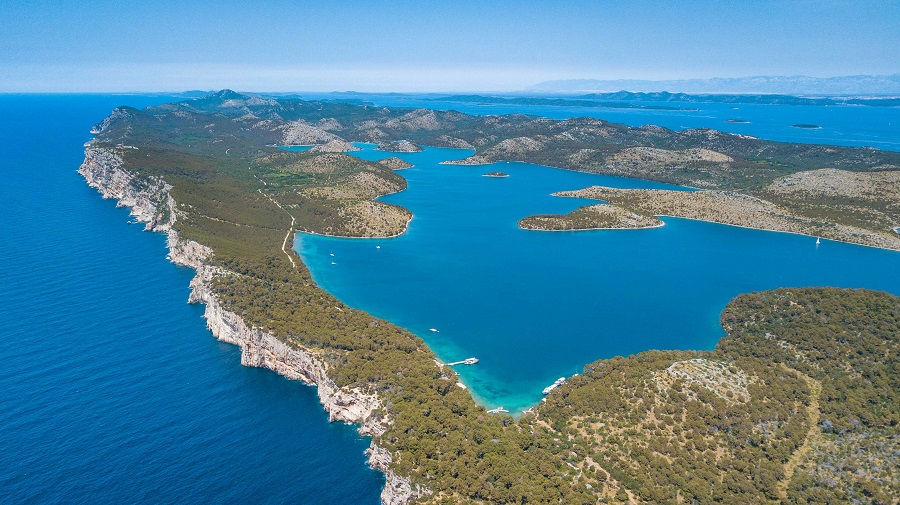
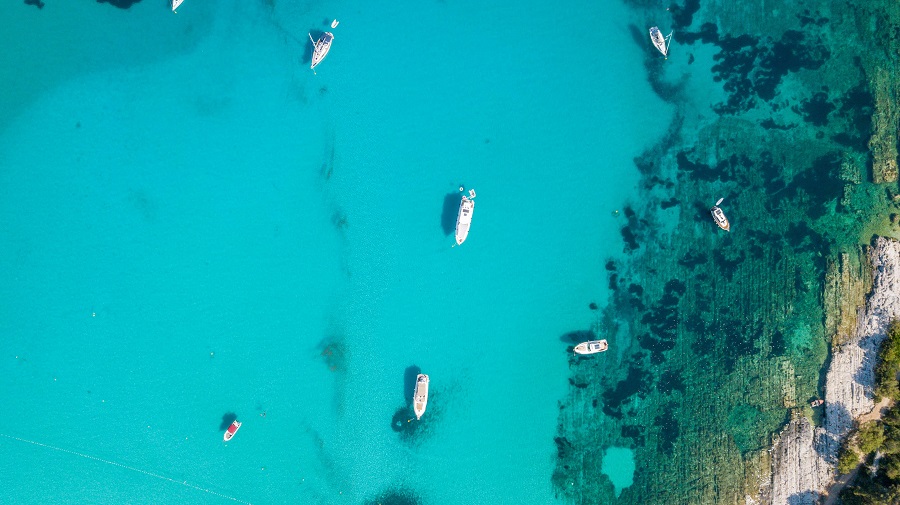
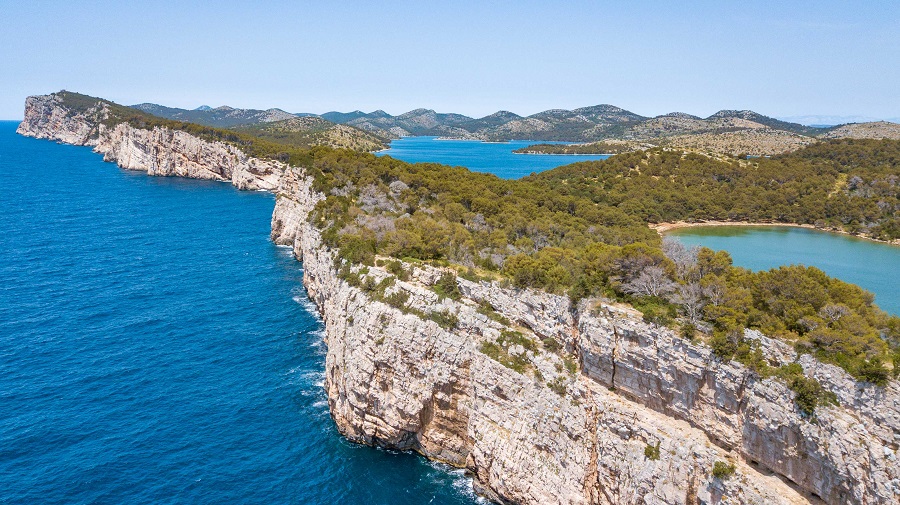
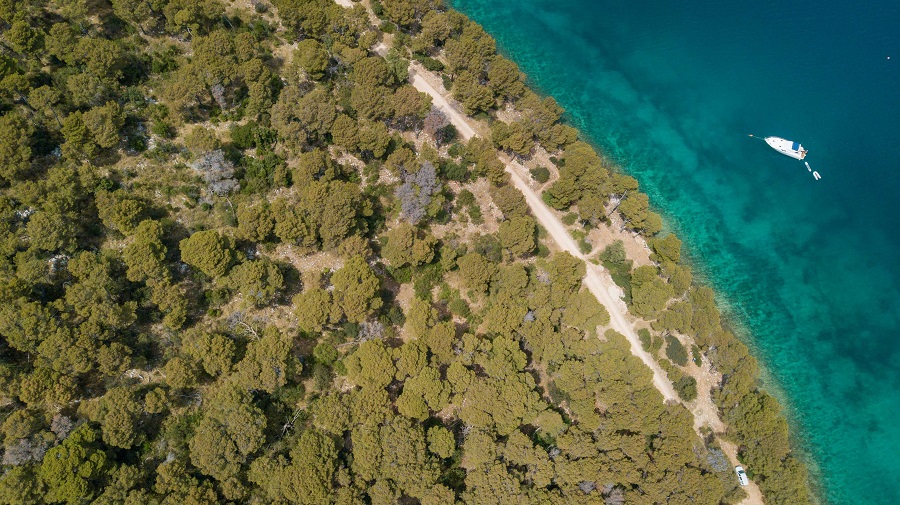
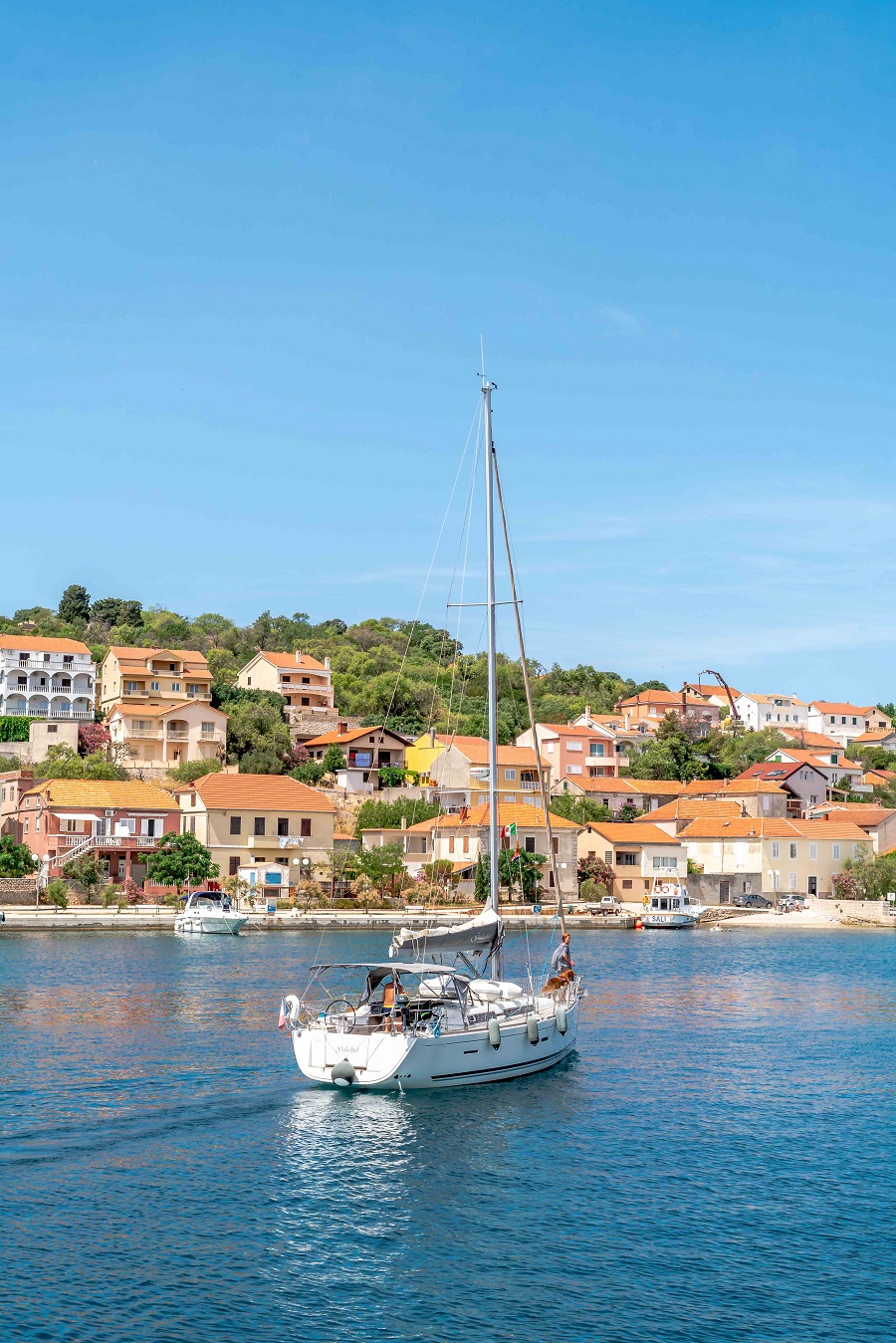
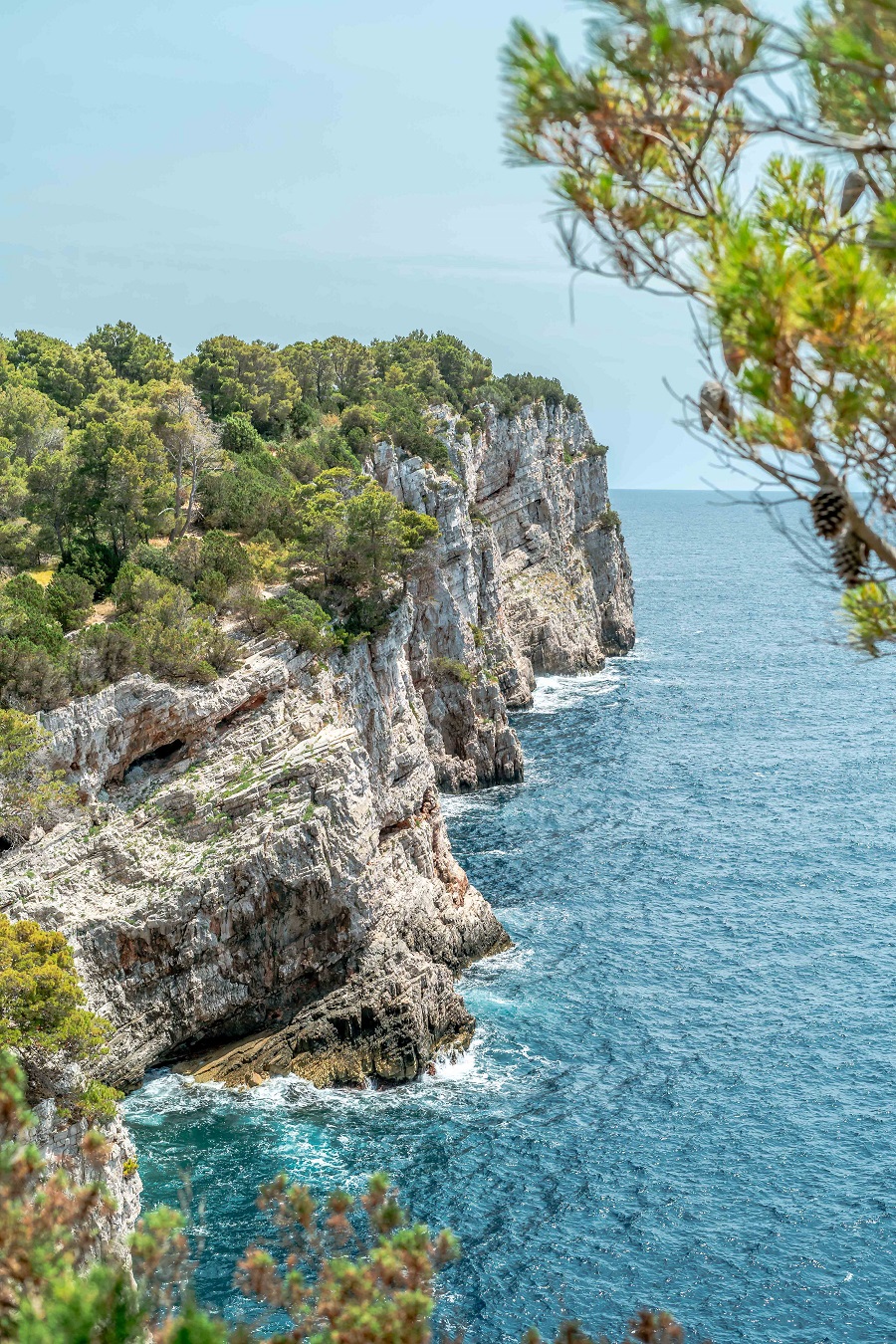
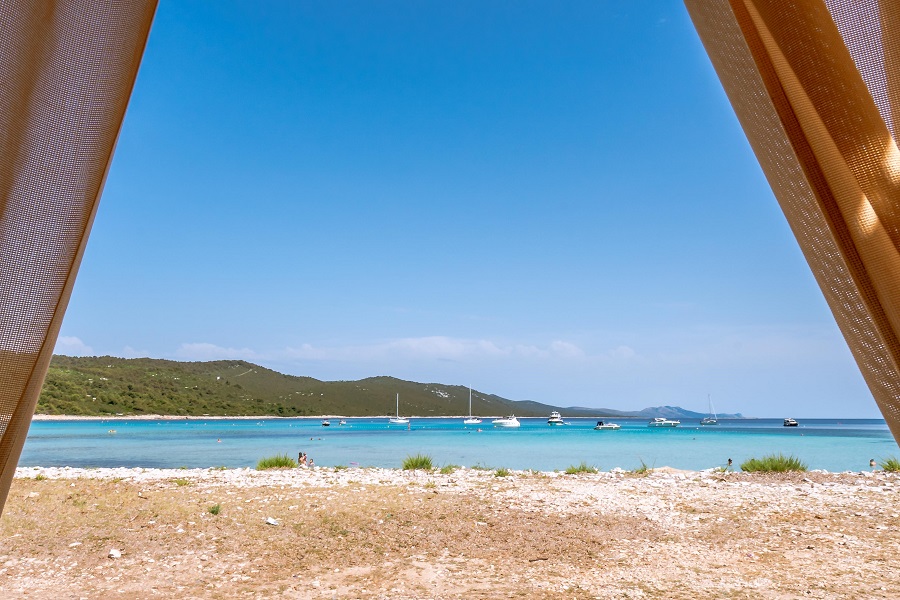
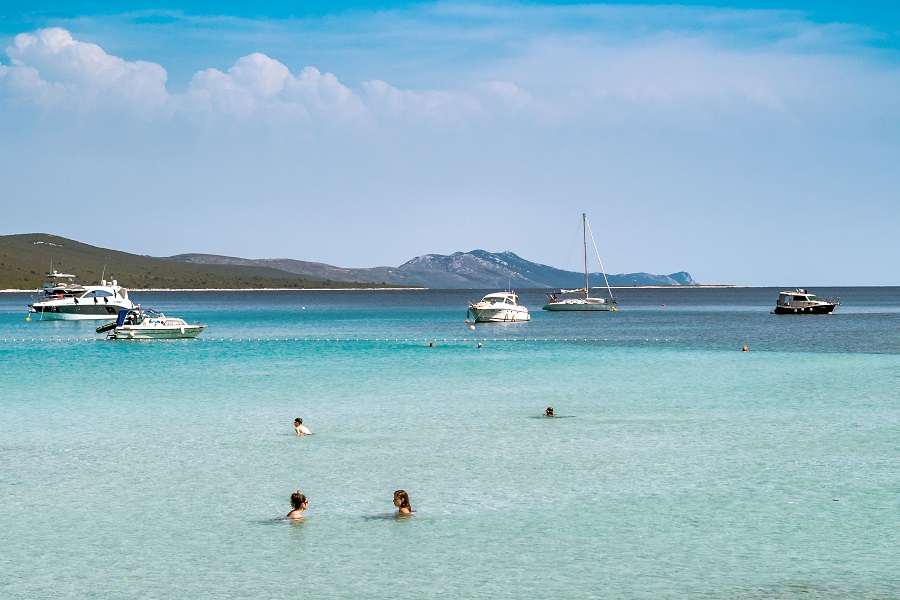
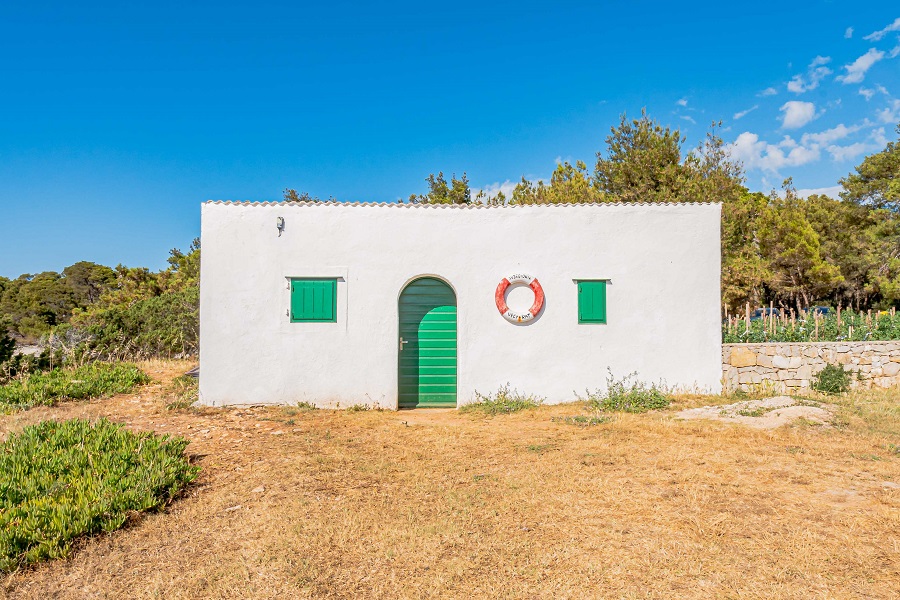
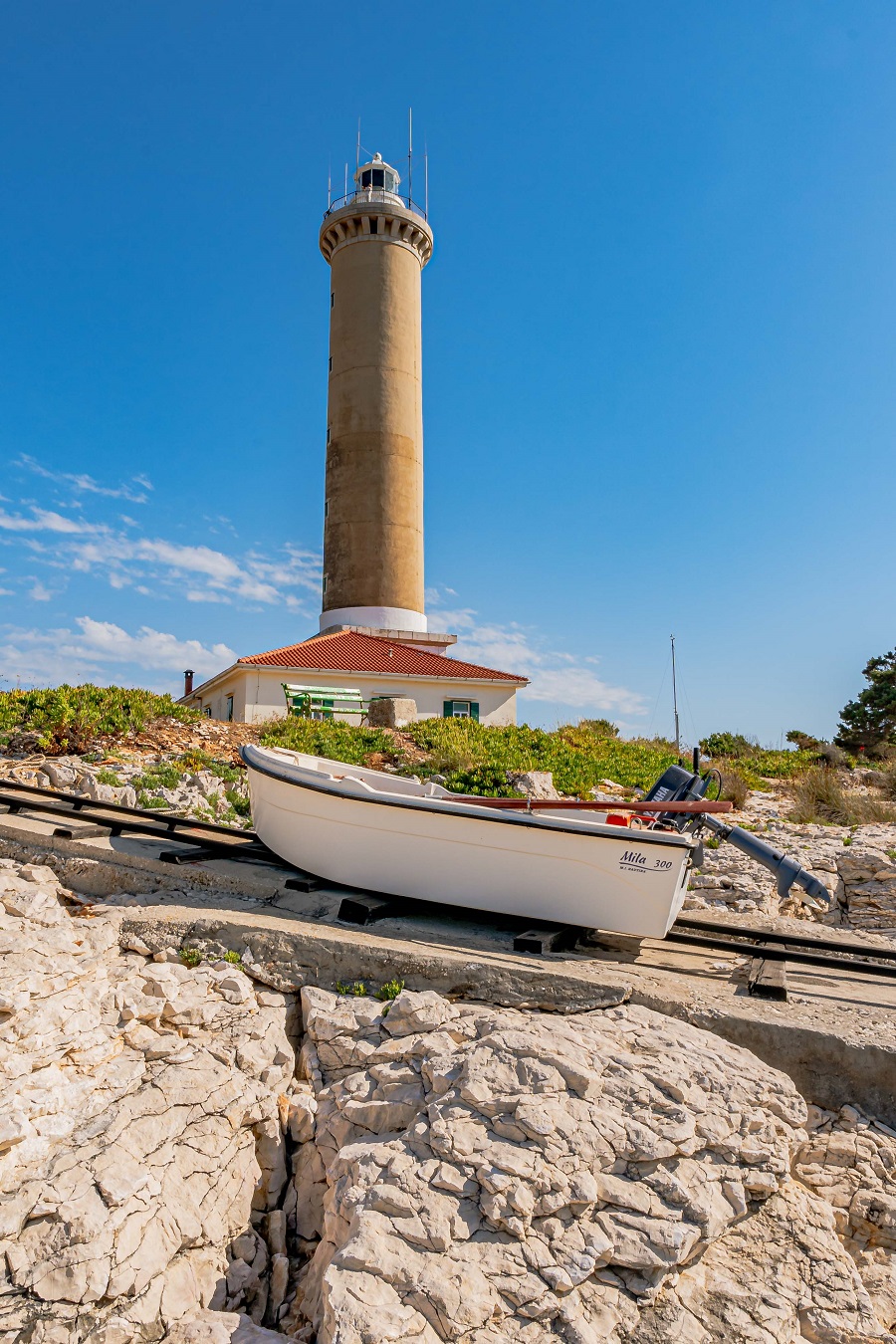
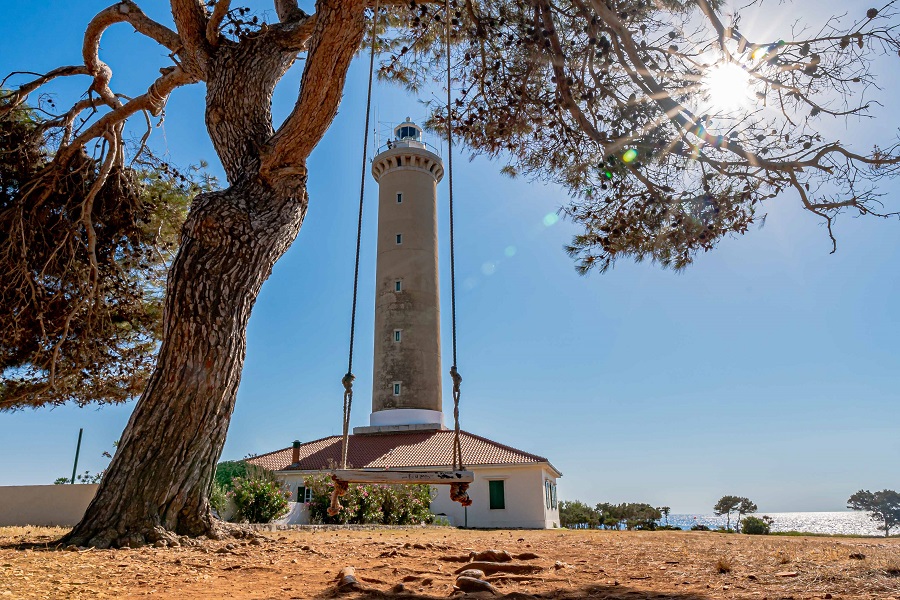
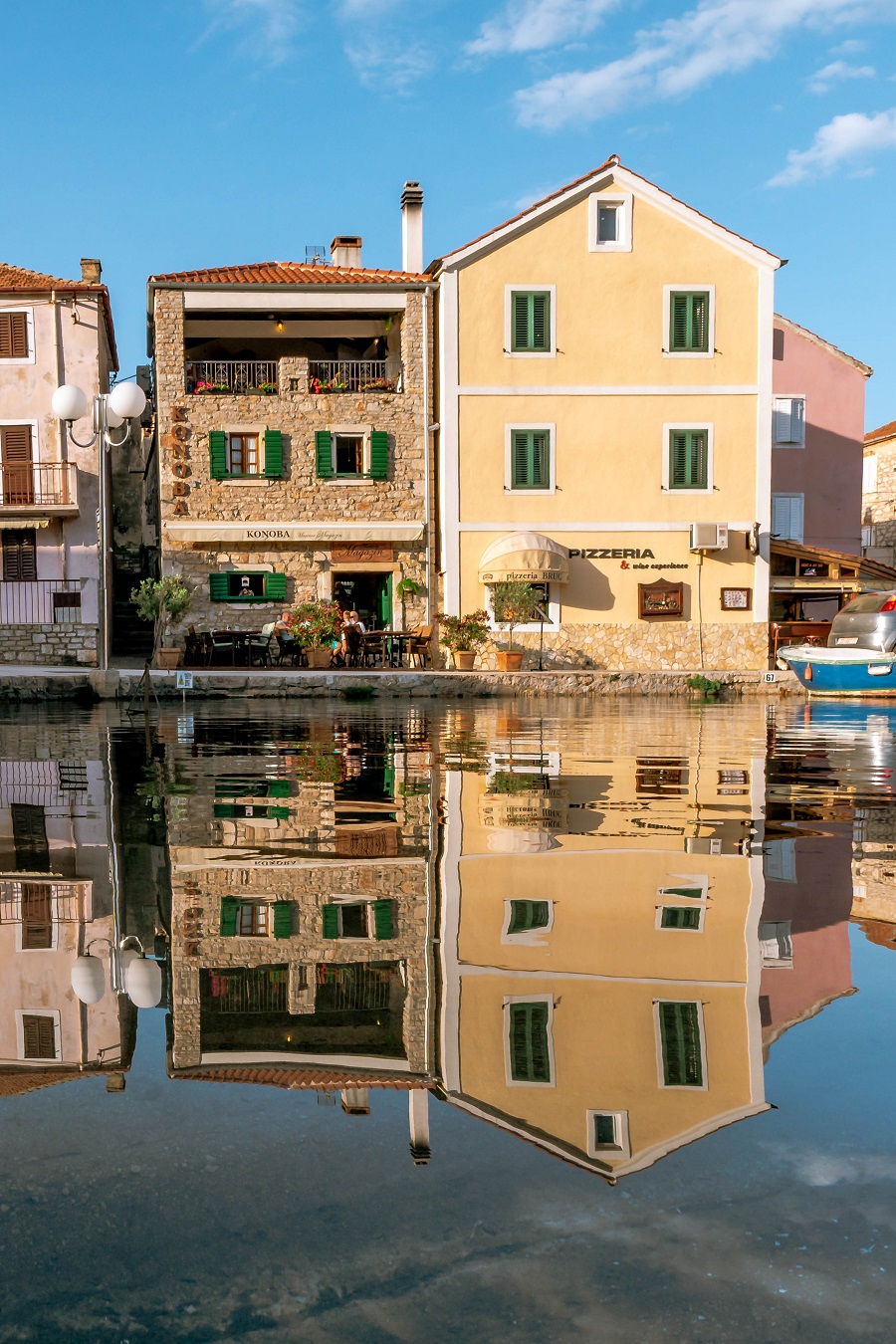

Sali on Dugi Otok Flips Epidemiological Situation from Terrible to Excellent
August the 14th, 2021 - Sali on beautiful Dugi otok has managed to create a dramatic turnaround in terms of their local epidemiological situation. The novel coronavirus just about made it inside every single house in Sali, but that dire situation has now been well and truly flipped on its head.
As Poslovni Dnevnik writes, on two occasions over recent months, the town of Sali on Dugi otok has been an example of a situation in which the spread of the coronavirus infection has spiraled out of control. However, according to the latest data published by the Croatian Institute for Public Health, Sali is now at the very top in terms of vaccination, ending the virus' free reign.
Sali's current vaccination rate stands at 64.1 percent, and this is the official figure that has kept all eyes on Sali, a favorite destination for both Croatian and foreign sailors. Jacopo confirmed to HRT that he feels very safe in Sali, and Frederica confirmed that they were also vaccinated against the novel coronavirus. Knowing that they're in a country where a large number of people are vaccinated is very important to them, he added.
The tourist season for this location is a record in all respects, and the good epidemiological situation gives room for hope that it will last. Maja Kraljev from Sali works abroad and she is very pleased with the latest data - it is important to her that she can come to visit her parents there in peace.
Andjelko Raljevic Ciko, one of the more famous Sali residents, had no doubt in his mind whatsoever about whether or not he should get vaccinated. He suffers from chronic bronchitis and was first vaccinated on the recommendation of a doctor. He will do it a third time if he needs to, he says. There is almost no house in Sali where they didn't have coronavirus patients, which pushed most people to get vaccinated as soon as it became possible.
''It was rough and the virus hit us hard here. Fear crept in among the people. And we have to live, we have to work and protect our community. Both the elderly population and the children,'' said Marijana Orlic, a nurse.
The response of Sali's locals was also influenced by the availability of vaccines, thanks to the mobile team of the Zadar Institute of Public Health. This is a great message to send out about this beautiful little place and is by far the best invitation for visitors to come and spend time on Dugi otok.
For all you need to know about coronavirus specific to Croatia, make sure to bookmark our dedicated COVID-19 section and select your preferred language.
Opening of Fascinating New Dugi Otok Hotel to Attract Attention
April the 7th, 2021 - The opening of the doors of a very interesting new Dugi Otok hotel is set to attract a lot of attention despite the ongoing pandemic and the difficulties both business and tourism continue to face.
As Poslovni Dnevnik/Marta Duic writes, the brand new Dugo Otok hotel, more precisely Villa Nai 3.3 in Zman, is on course to open its doors on May the 28th this year. The conceptual design of the building was designed by academician Nikola Basic back in 2013, and it was designed on isohypsis, which gives it an unexpected and deeply unusual geometric shape.
This is a project that received support from measure 4.2 and was created with the support of both the HBOR and the ESIF loan through HAMAG-BICRO.
As Goran Morovic explained, who, in addition to the production of organic olive oil, is also entering the tourism business with the opening of this new Dugi Otok hotel, it is a facility surrounded by a thousand olive and other fruit trees. The yard of the building stretches out for about four hectares, and their family farm normally takes care of six of those hectares.
“Villa Nai 3.3 is an exceptional architectural and construction achievement, designed by academician Nikola Basic. It's a facility that fits perfectly into the landscape of the island and the microlocation inside the olive groves. Under the same roof, there are eight accommodation units, an olive oil tasting room and a small oil mill "in charge" of processing the olives grown from its own olive grove, as well as a small shop selling Croatian products,'' Morovic pointed out.
A five star organic farm
The excavated stone was used for the production of concrete and stone cladding, and additional facilities include an outdoor overflow base, an indoor pool with a wellness area, a spa with treatments based on olive products, a cigar/smoking room, a lobby bar and a tennis court.
It's worth adding that this new Dugi Otok hotel is already a member of The Leading Hotels of the World, and their May opening was announced by Forbes magazine, which declared them one of the nine new addresses to head to for the summer ahead of us.
Morovic pointed out that the accommodation units, a total of five deluxe rooms and three deluxe suites are individually decorated and each of them has access to the terrace. He added that attention is paid to every detail, from the design and quality of the furniture, the bedding, the bathtubs and walk-in showers to the floor and wall coverings, and the total accommodation capacity is sixteen people.
The basis of all dishes sold within the new Dugi Otok hotel are foods of organic origin, grown on ecologically clean island land or caught in the Adriatic sea, and the wine list offers a selected selection of Croatian wines and international classics, a total of more than 200 labels, according to Morovic, who with his wife Nives, also produces organic extra virgin olive oil.
As many as 1,100 trees
Their olive grove covers five hectares and boasts 1,100 trees, a third of which are centuries-old, and the rest have been planted in the last fifteen or so years.
The branding for the new Dugi Otok hotel was entrusted to the Bruketa & Zinic & Gray agency, and the chosen name Nai means snow in the Dalmatian-Romance, extinct language of the area.
Plastic-Free Croatia: Croatian Cities and Islands Moving to Reduce Plastic Waste
February 7, 2021 - Dubrovnik, Trogir, Stari Grad on Hvar, and Sali on Dugi Otok will be the first in Croatia to reduce plastic waste and use alternative solutions by participating in projects implemented by the Split Association "Sunce" for Nature, Environment, and Sustainable Development, setting the pace for a plastic-free Croatia.
Glas Istre reports that "Plastic Smart Cities Croatia" and "For Plastic Free Croatian Islands" aim to reduce plastic waste and use alternative solutions. They analyze the use of disposable plastics and waste plastic management in the local communities involved, develop and implement a "Plastic-Free Plan" with a participatory approach and workshops, as well as organize "plastic-free" public events, i.e., events and public forums aimed at raising awareness in the local population about the consequences of plastic pollution.
One of the important activities is implementing a national campaign to raise awareness of the impact of plastic pollution on the marine environment and available sustainable solutions in the island communities on Hvar and Dugi Otok. The Split Association for Nature, Environment and Sustainable Development "Sunce"is currently working on organizing workshops for networking partners and environmental organizations engaged in this topic.
It is in this project that the pioneer association "Sunce" began implementing the projects "Plastic Smart Cities Croatia" and "For Plastic Free Croatian Islands" to reduce the plastic footprint in various segments of social life in local communities by reducing the use of disposable plastic and encouraging the use of alternative solutions for plastic waste. One of their project goals is to raise the awareness of citizens and the public about plastic waste.
After the completion of the project, a final conference will be held aimed at disseminating the project results and encouraging the further reduction of plastic waste for representatives of local island authorities, national and international NGOs, local government units, representatives of the Croatian Chamber of Commerce, tourism, relevant ministries, and other stakeholders, with the message "Reduce the use of disposable plastics and look for more sustainable solutions!", which the Sunce Split Association has been advocating for many years.
They remind that a new Law on Waste should be adopted in Croatia this year, which, among other things, contains some provisions of the EU Directive on reducing the impact of certain plastic products on the environment. At the end of last year, independently and in cooperation with other environmental protection associations in Croatia, they sent their comments on the Waste Act's draft proposal.
They add that the European organization "Seas at Risk," which brings together several associations dealing with protecting the marine environment, assessed last summer that the EU directive is an ambitious plan to dispose of ten non-reusable plastic items, and which can most often be found on beaches across Europe, but that its implementation into national legislation in most European countries has been halted.
The COVID-19 crisis has led to a dramatic increase in the use and the rejection of disposable plastic objects in nature.
"The Mediterranean Sea is one of the world's most polluted seas, and half of this enormous amount of waste comes from the mainland. With 400 kilotons of waste generated annually, Croatia ranks third in the region. Hence, it is imperative to take urgent measures and raise awareness to numerous visitors about the need for urgent action, i.e., reducing disposable plastic use.
Namely, tourism has been identified as one of the key actors, so part of the awareness campaign within the "Plastic Smart Cities" project is aimed at foreign and domestic tourists, the Sunce Split Association points out.
The EU directive on plastic waste was adopted in 2019 after a trialogue, i.e., negotiations between the European Parliament, the Commission, and the EU Council. This year, all EU countries must finally implement it. The Law on Waste in Croatia should be adopted by July 3 at the latest. Croatia should also throw out disposable plastic products, namely plastic q-tips, cutlery, plates, straws, drink sticks, and balloon holders.
After adopting the directive in the European Parliament, the then Croatian MEP Davor Škrlec from the Green Group said that the directive should be used to encourage change for us as a society to produce less garbage and become sustainable.
"If we do not change our attitude towards production, consumption, and waste, the human species will become consumable like a disposable coffee cup. This directive will help us abandon disposable plastics on the road to less consumption, better designed reusable products, more innovation, and a cleaner environment," Škrlec said then.
The directive also includes provisions for the disposal of cigarette butts, which are a significant polluter, the objectives of collecting beverage bottles, and the requirement to redesign beverage stoppers to connect them to bottles. The directive also includes national targets for reducing the consumption of plastic cups and food containers, and ultimately a total ban on oxo-degradable plastics often referred to as biodegradable but in reality fragmented into microplastics.
Disposable plastic products and fishing gear together account for 70 percent of Europe's marine litter, so it is expected that Europe's seas will be significantly cleaner by implementing the directive.
According to the Commission, the directive will bring many benefits for the environment and the economy. Environmental damage would be avoided, costing €22 billion by 2030, and saving consumers up to €6.5 billion, with an adjustment cost estimated at €3.2 billion for manufacturers.
At the end of last year, the Commission adopted new rules on the import and ban on exports of plastic waste to third countries that do not have the capacity to manage it in a sustainable way, which is one of the main points of the European Green Plan and EU Circular Action Plan.
To read more about lifestyle in Croatia, follow TCN's dedicated page.
VIDEO: Stunning Aerial Footage of Dolphin Family in Zadar Archipelago
February 1, 2021 – The Adriatic might be too cold for us right now, but conditions are perfect for this dolphin family, spectacularly captured gliding through glacial, undisturbed waters by an overhead drone
The Adriatic might be too cold for us right now, but conditions are perfect for this dolphin family, spectacularly captured gliding through glacial, undisturbed waters by an overhead drone
The footage of the dolphin family was captured spectacularly by keen amateur drone photographer Davor Miljkovic. Davor, who is from Zapresic, usually puts his eye for aesthetics into website design – he works as a PHP website developer for Virtus dizajn in Lanište, Zagreb and as a freelance website developer. But, he is currently taking advantage of working remotely and was able to catch footage of the dolphin family during his off time.
“I live in Zapresic but my grandmother is from island Rava, near Zadar,” Davor told TCN on 1st February 2021, two days after he posted the video of the dolphin family to his Youtube channel. “So, we have a house here by the sea. My fiance and I spend part of the winter here and we are here all summer too.”
The Zadar archipelago (in Croatian Zadarski arhipelag) is an incredibly picturesque group of islands off the coast of the city of Zadar. In addition to island Rava, off which Davor saw the dolphin family, the archipelago also consists of the islands Dugi Otok, Galešnjak, Iž, Lavdara, Ošljak, Pašman, Rivanj, Sestrunj, Tun Veli, Ugljan, Vir, Vrgada, Zečevo and Zverinac.
The beautiful stretch of islands is usually very popular with summertime visitors. It would seem that it's also popular in wintertime with visitors who live in the sea. And, of course, people like Davor who are lucky enough to catch sight of them.
For the latest travel info, bookmark our main travel info article, which is updated daily.
Read the Croatian Travel Update in your language - now available in 24 languages
Lucky Donkey Sh*t a Hit Croatian Souvenir
July 26, 2019 - What can Croatia offer tourists wanting to take home a unique Croatian souvenir from their travels? While we’re more than familiar with red-and-white checkered clothing items from shirts to caps, delicate bags of fresh lavender, wine and olive oil or your cheap (and probably misspelled) fridge magnets or beach towels from China, the owner of an OPG from Telašćica has come up with perhaps the most original souvenir of them all - donkey sh*t.
“It’s donkey sh*t and as a souvenir it is great. We called it 'Lucky Donkey Shit', which means it’s lucky sh*t, so Croatian and foreign tourists are happy to buy it,” said Sebastijan Jagić for Zadarski.hr, whose father Goran, known as Cape, sells the donkey waste among a plethora of souvenirs in Telašćica on the island of Dugi Otok.
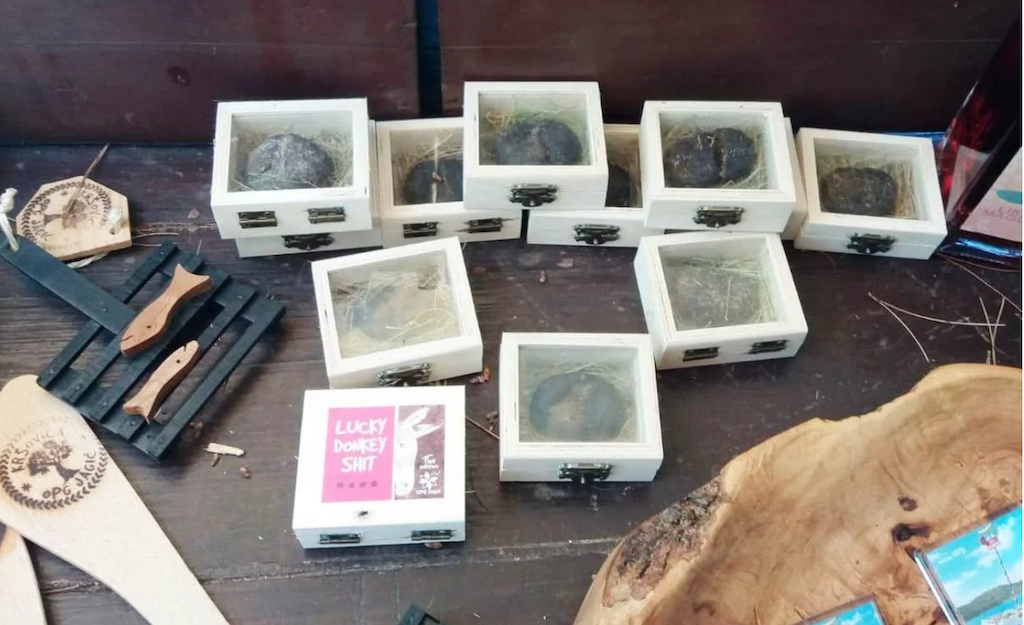
Zadarski.hr reader
“It's not so easy for us, there's a lot of work around this ‘lucky sh*t’. Namely, when our donkeys defecate, they make a big pile - but only one deuce is different than the rest, and we have to find it in that pile. Fortunately, it is relatively easy to recognize because it is full of grass and is quite different in its composition. When we pull it out, we put it in a box and sell it,” explains Sebastijan.
The price of this ‘lucky sh*t” is 40 kuna.
“People do not even ask for the price. It is important for them that ‘Lucky Donkey Shit’ brings them luck and our sh*t travels all over Europe,” says Sebastijan.
And you might be wondering if there is a foul odor or smell?
“As I explained, it comes from a special part of the waste that is mostly grass. So it does not have any smell. You can freely open the box where we sell it and see for yourself,” explained Sebastijan.
The Mayor of the Municipality of Sali, Zoran Morović, welcomes this unique initiative.
"I know it is sold in Telašćica, and the idea came from that family. I see nothing bad about it, especially in the flood of all kinds of souvenirs. This is at least original, and if it weren’t liked, so many people would not have bought it,” said Morović.
To read more about lifestyle in Croatia, follow TCN’s dedicated page.
First Wedding in Dragove on Dugi Otok in Half a Century
As Morski writes on the 14th of July, 2019, the heros of this incredible yet true and, above all, romantic, tale are economists Maja Borošak (27) and electro-engineering technician Goran Borovcak (34) from Zagreb, who breathed new life into sleepy little Dragove.
On Saturday, June the 22nd, 2019, Maja and Goran got married in the church of St. Leonard in Dragove, on the island of Dugi Otok, not quite realising that they had entered history, more specifically the history of this beautiful old place.
Kristina Škrivanek and Marko Mirosavljević, who were the witnesses to the wedding ceremony, also entered into Dragove's history. Namely, their wedding was the first to take place in Dragove for more than fifty years. For the last half a century, there have been no baptisms, christenings or marriage in this church, only funerals, writes the Mega Media portal.
Dragove, which could once boast of hundreds of inhabitants, is now all but entirely extinct, almost empty, and can only boast of a mere twenty permanent residents today, almost all of whom are of considerable age. Maja and Goran's wedding will therefore be remembered as a beautiful event as picturesque Dragove, the residents of which have been unable to see for decades.
The wonderful wedding ceremony was held in front of 22 guests was also witnessed by three elderly villagers who were very enthusiastic and cheerful, just as if they were members of the families of the couple getting married.
It is also interesting to note that in the next two months, in the church of St. Leonard in Dragove, there will be two more weddings.
In August, a couple of tourists who, just like Maja and Goran, fell in love with Dugi Otok, will get married there. Just one month later in September, and there will be a wedding of a woman whose mother hails from Dragove, and her fiancé, who is from France.
Make sure to follow our dedicated lifestyle page for much more.
New Breakwater and Waterfront On the Cards for Sali, Zadar County
As Morski writes on the 29th of May, 2019, the construction of a coastal belt and the new breakwater is a new project of the Zadar County Port Administration in the ports of the Zadar region's islands which are now waiting for the necessary construction permits, as well as to be registered as candidates for funding from the Croatian Ministry of Maritime Affairs, Transport and Infrastructure within the scope of the "Competitiveness and Cohesion 2014-2020" program.
The above project is worth a massive thirty million kuna, with the investor, the Zadar County Port Authority, accounting for 75 percent of the investment within this program. Currently, the largest port facility operation in Zadar County, the construction of a ferry port in Tkon on the island of Pašman, is funded mostly by money from the aforementioned fund, Zadarski.hr writes.
With this investment, the northern shore of the harbour or the bay in Sali will be extended and properly arranged in the length of an additional 150 metres, while the new breakwater which is also set to be constructed in Sali will be 114.5 metres in length.
The new pier will fully protect the Sali's harbour, and thus far more securely, from potentially damaging and strong southeastern winds, and the new shoreline and breakwater will provide new berths for the transit needs of Sali's local harbour within a concession held by the Sali-based communal company "Mulić".
Davor Škibola, the director of ŽLU Zadar, said that all preparations for the realisation of this project could be completed by the end of this year, and that things could be wrapped up at the time, or at the latest at the beginning of next year, when the construction of a new part of Sali's riva (waterfront) and the breakwater would finally begin.
Make sure to follow our dedicated lifestyle page for much more.


